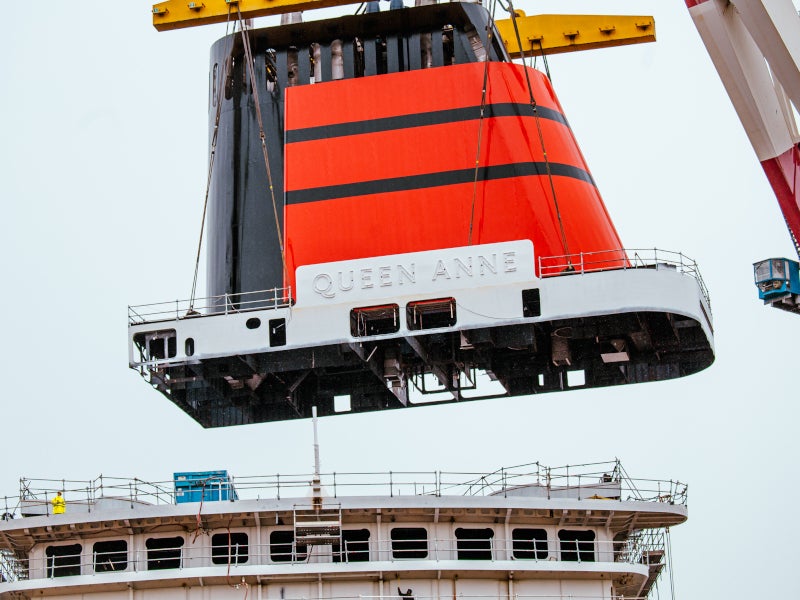Queen Anne Ship: The Legacy And Mystique Of A Pirate's Treasure
The Queen Anne's Revenge is a name that evokes visions of piracy, adventure, and untold treasures hidden beneath the waves. This infamous vessel, once captained by the legendary pirate Blackbeard, has captured the imagination of history enthusiasts and adventurers alike. The story of the Queen Anne's Revenge is not just a tale of piracy; it’s a journey into the heart of the Golden Age of Piracy.
The Queen Anne's Revenge holds a special place in maritime history. As one of the most notorious pirate ships of its time, it symbolizes the era of bold pirates who roamed the seas, defying authority and leaving behind a legacy of daring exploits. The ship itself became a legend, partly because of its association with Edward Teach, better known as Blackbeard, one of the most feared pirates in history.
This article will delve deep into the fascinating history of the Queen Anne's Revenge, exploring its origins, its role in piracy, and its eventual demise. We’ll uncover the mysteries surrounding this legendary vessel and provide insights into its significance in shaping our understanding of the pirate era.
Read also:Lily Atkinson Unveiling The Rise Of A Talented Artist
Table of Contents
- Biography of Queen Anne's Revenge
- Origins of the Ship
- Association with Blackbeard
- Design and Armament
- Voyages and Raids
- The Sinking of the Queen Anne's Revenge
- Discovery of the Wreck
- Artifacts and Discoveries
- Preservation Efforts
- Legacy and Cultural Impact
Biography of Queen Anne's Revenge
Historical Overview
The Queen Anne's Revenge was originally named "La Concorde" when it was built as a French slave ship in the early 18th century. Captured by Blackbeard in 1717, the ship was renamed to honor Queen Anne, who had reigned over England during the late 17th century. Below is a brief overview of the ship’s historical journey:
| Year | Event |
|---|---|
| 1713 | La Concorde launched as a French merchant ship |
| 1717 | Captured by Blackbeard and renamed Queen Anne's Revenge |
| 1718 | Sank off the coast of North Carolina |
| 1996 | Wreck discovered near Beaufort Inlet |
Origins of the Ship
Before becoming the infamous pirate ship associated with Blackbeard, the Queen Anne's Revenge began its life as a French merchant vessel named La Concorde. Built in France in the early 18th century, this ship was designed for long-distance voyages and was heavily involved in the transatlantic slave trade. Its robust construction and large capacity made it an ideal target for pirates seeking a vessel that could carry both crew and plunder.
In 1717, the ship was captured by the pirate Captain Benjamin Hornigold, who handed it over to his protégé, Edward Teach, also known as Blackbeard. Under Blackbeard's command, the ship underwent significant modifications, including the addition of more cannons, transforming it into a formidable pirate vessel.
Association with Blackbeard
Blackbeard's Reign of Terror
Blackbeard, one of the most notorious pirates in history, used the Queen Anne's Revenge as his flagship during his short but infamous career. The ship became a symbol of his power and intimidation tactics. Blackbeard was known for his fearsome appearance, complete with lit fuses tucked under his hat, which gave the illusion that his head was on fire.
- 1717: Captured La Concorde and renamed it Queen Anne's Revenge
- 1718: Used the ship to blockade the port of Charleston, South Carolina
- 1718: Intentionally ran the ship aground near Beaufort Inlet
Design and Armament
The Queen Anne's Revenge was a large ship, measuring approximately 103 feet in length and weighing around 200 tons. It was equipped with 40 cannons, making it one of the most heavily armed pirate ships of its time. The ship's design allowed it to navigate both deep and shallow waters, giving Blackbeard a tactical advantage over his prey.
The armament of the Queen Anne's Revenge included a variety of cannons and small arms, which were used to intimidate and overpower merchant ships. The ship's crew was estimated to be around 300 men, a significant number for a pirate vessel, allowing Blackbeard to dominate the seas.
Read also:Aubrey Saget The Rising Star In The Entertainment Industry
Voyages and Raids
Under Blackbeard's command, the Queen Anne's Revenge participated in several daring raids along the Atlantic coast. One of the most famous incidents was the blockade of the port of Charleston, South Carolina, in 1718. During this event, Blackbeard and his crew captured several ships and held prominent citizens hostage, demanding a ransom in the form of medical supplies.
The ship's voyages were not limited to the American coast; it also sailed through the Caribbean, where Blackbeard and his crew plundered numerous merchant vessels. The Queen Anne's Revenge became a symbol of terror, with its sight alone often enough to convince crews of merchant ships to surrender without a fight.
The Sinking of the Queen Anne's Revenge
In June 1718, Blackbeard intentionally ran the Queen Anne's Revenge aground near Beaufort Inlet, North Carolina. The exact reasons for this action remain unclear, but historians speculate that it may have been part of a plan to disband his crew and claim a larger share of the plunder for himself. The grounding of the ship effectively ended its career as a pirate vessel.
Following the sinking, Blackbeard transferred to a smaller ship, the Adventure, and continued his piratical activities until his death in November 1718. The wreck of the Queen Anne's Revenge lay hidden beneath the waves for nearly three centuries before its rediscovery in 1996.
Discovery of the Wreck
The wreck of the Queen Anne's Revenge was discovered in 1996 by Intersal, Inc., a private research company. The site, located near Beaufort Inlet, has since become a focal point for archaeological research and preservation efforts. Numerous artifacts have been recovered from the wreck, providing valuable insights into the life and times of pirates during the early 18th century.
Archaeologists have identified several key features of the wreck, including the ship's cannons, anchors, and other remnants. These artifacts have helped confirm the identity of the ship and shed light on its design and construction.
Artifacts and Discoveries
Key Artifacts Found
Since its discovery, the wreck of the Queen Anne's Revenge has yielded a wealth of artifacts, each offering a glimpse into the world of piracy. Some of the most significant discoveries include:
- Forty cannons, confirming the ship's armament
- A large anchor, weighing over 2,000 pounds
- Medical instruments, supporting the theory that Blackbeard sought medical supplies during the Charleston blockade
- Coins and other personal items belonging to the crew
These artifacts are now housed in museums, where they continue to educate and inspire visitors about the history of piracy.
Preservation Efforts
Efforts to preserve the wreck of the Queen Anne's Revenge are ongoing. The North Carolina Department of Natural and Cultural Resources has played a key role in managing the site and ensuring that artifacts are properly conserved. Public interest in the ship has led to increased funding for research and preservation projects.
Visitors can learn more about the Queen Anne's Revenge through exhibits and educational programs offered by various institutions. These initiatives aim to raise awareness about the importance of preserving maritime history and the cultural significance of pirate lore.
Legacy and Cultural Impact
The Queen Anne's Revenge continues to captivate the imagination of people worldwide. Its association with Blackbeard has cemented its place in popular culture, inspiring books, movies, and even video games. The ship's legacy extends beyond entertainment, serving as a reminder of the complex history of piracy and its impact on global trade and politics.
Today, the Queen Anne's Revenge stands as a symbol of adventure, defiance, and the enduring allure of the sea. Its story is a testament to the power of history to inspire and educate, connecting us to the past in meaningful ways.
Conclusion
The Queen Anne's Revenge is more than just a pirate ship; it is a piece of history that continues to fascinate and educate. From its origins as a French slave ship to its legendary status as Blackbeard's flagship, the vessel has left an indelible mark on maritime history. The discovery and preservation of its wreck have provided valuable insights into the world of piracy and the lives of those who sailed the seas during the Golden Age of Piracy.
We invite you to explore further and share your thoughts on this article. For more fascinating stories from history, check out our other articles. Together, let’s continue to uncover the mysteries of the past and celebrate the enduring legacy of the Queen Anne's Revenge.


